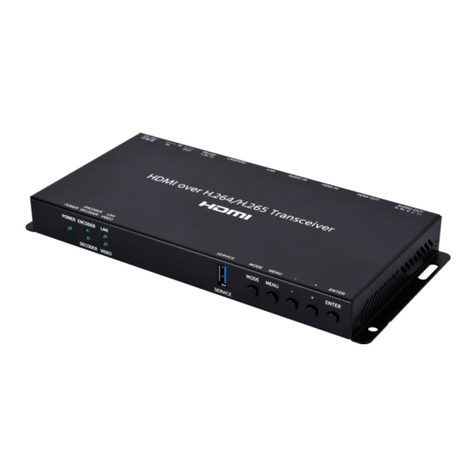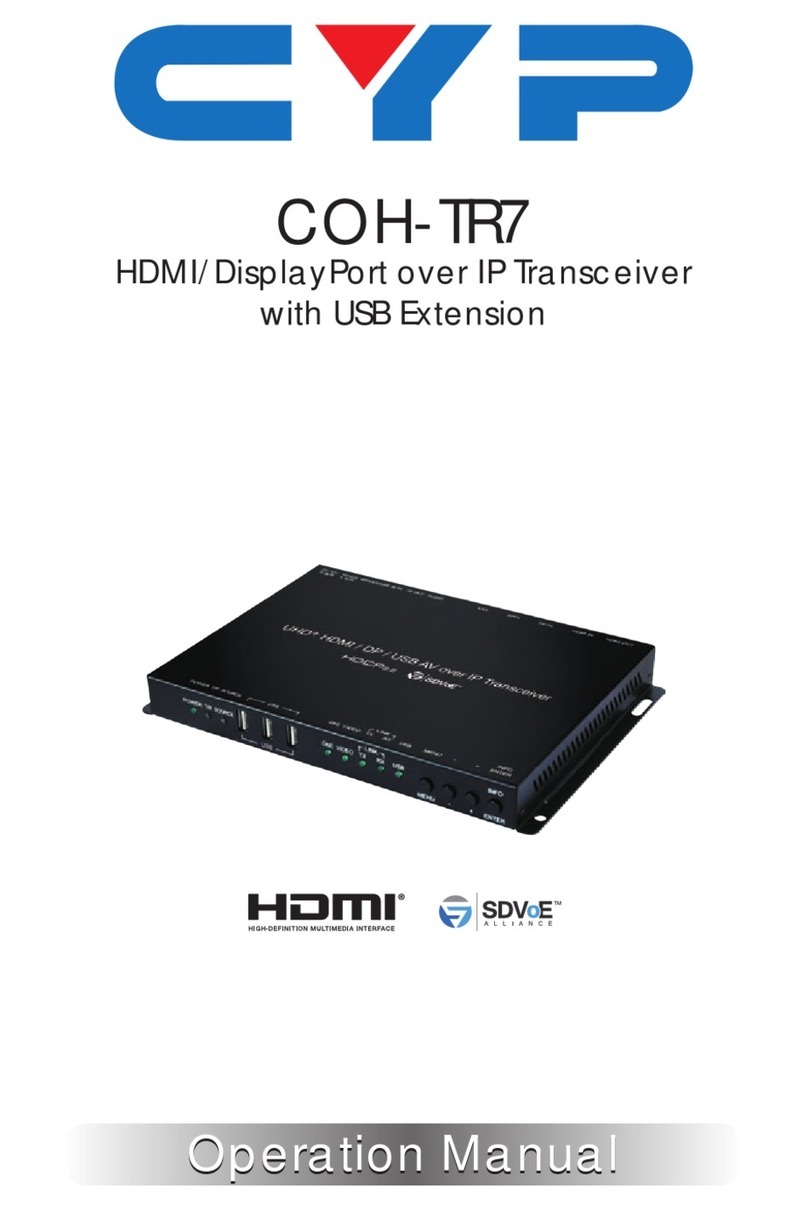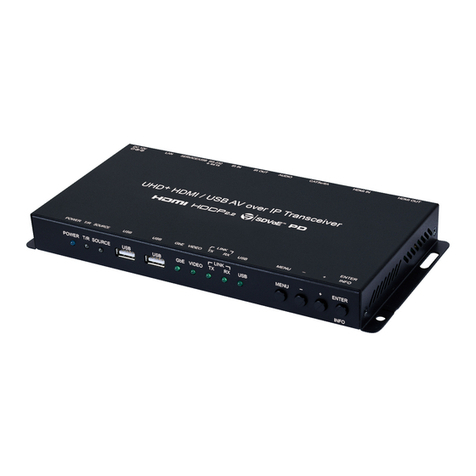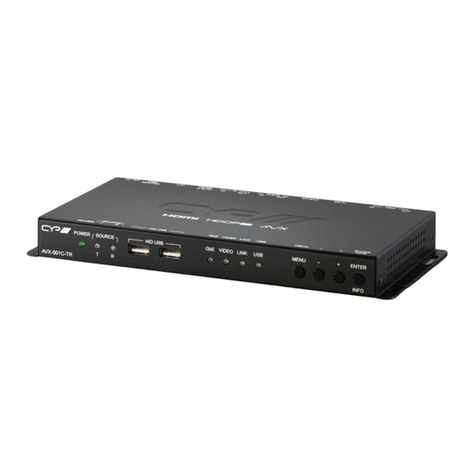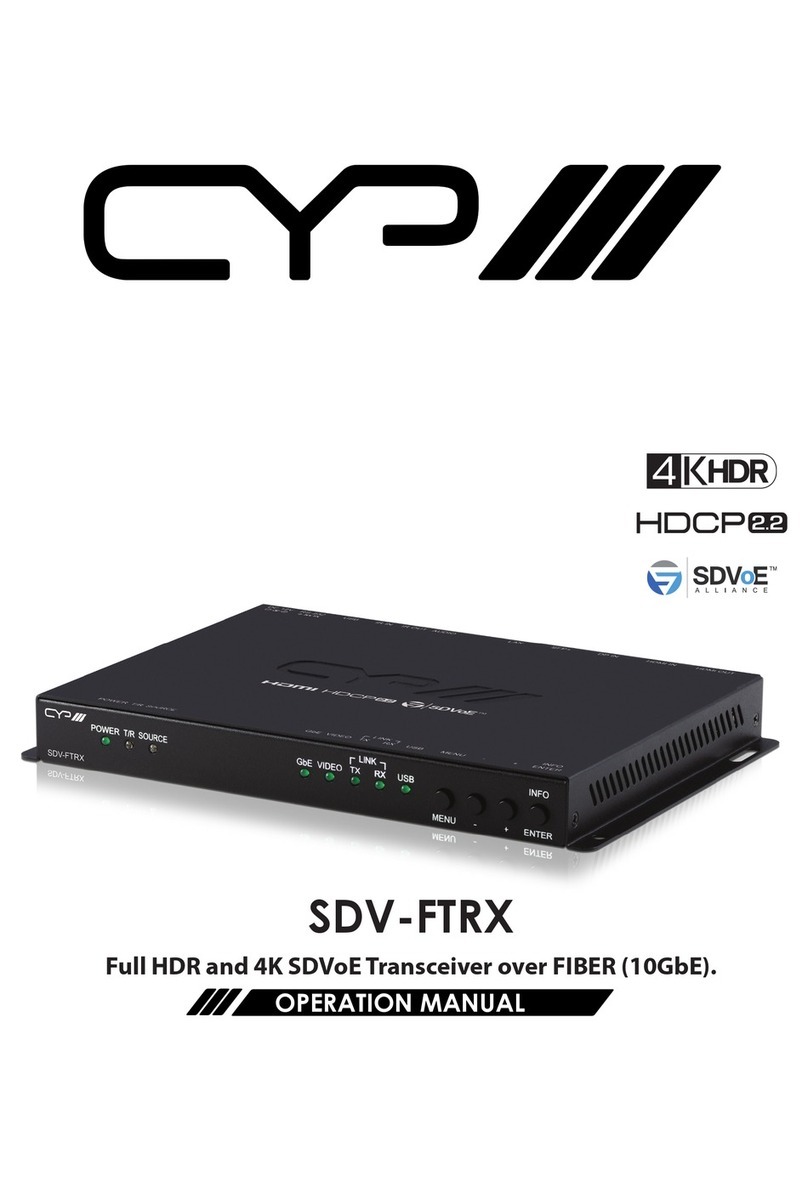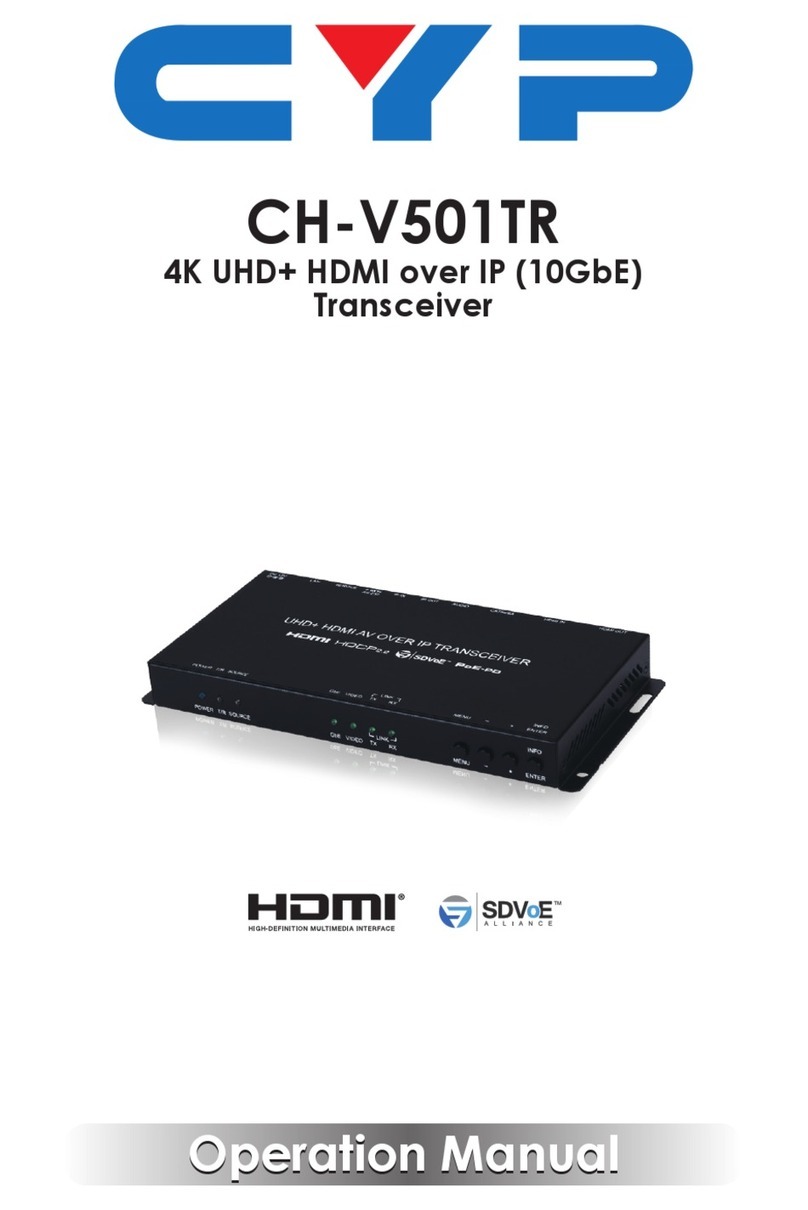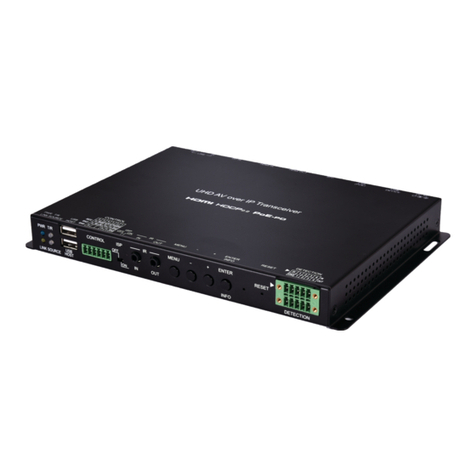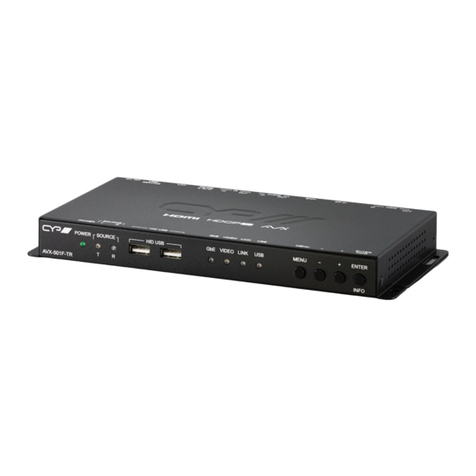
1
1. INTRODUCTION
This Transceiver is designed for high-quality, IP routable, AV extension
with minimum latency. Every Transceiver can be congured to
function as either a Transmitter or a Receiver, enhancing the exibility
of any installation. By using a sophisticated ultra-light compression
scheme (lossless for most content) it’s a great solution for extending
4K audio/video streams (HDMI or DisplayPort) and data. Advanced
HDMI content such as HDR (High Dynamic Range), 10-bit color and
multi-channel HD Bitstream audio can be transmitted in pass-through
mode. The use of interchangeable, eld replaceable, SFP+ modules
allows for transmission distances of up to 30km (Maximum transmission
distance depends on the SFP+ modules used). Multiple control and
data signals may also be transmitted along with the audio and video,
including IR, RS-232, USB (for KVM) and Ethernet.
When combined with the optional control center or control software,
the functionality of the Transceiver expands exponentially. Multiple
Transceivers may be combined with one or more 10-Gigabit ber
Ethernet switches and the units can be used together to form a
distributed video matrix, a multi-viewer system, or a video wall system
adding to their exibility in large event installations. The built-in EDID
and HDCP management functionality enables the unit to t into every
situation. Basic conguration of the unit can be achieved via front
panel buttons with an On-Screen Display (OSD). Advanced control
requires optional control software and a LAN connection.
2. APPLICATIONS
• Video, Audio, LAN, IR, RS-232, and USB over ber extension
• Hotel or convention center display
• Multi-monitor broadcast
• Long distance data and video transmission immune to RF
interference
• Distributed video matrix system
• Distributed video wall system
• Remote KVM system control






